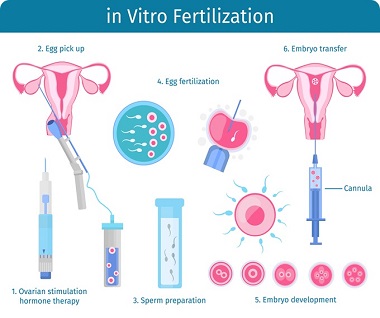
In Vitro Fertilization (IVF)
In Vitro Fertilization (IVF)
IVF or In Vitro Fertilization is an assisted reproductive technology (ART) commonly referred to as IVF. IVF is the process of fertilization by extracting eggs, retrieving a sperm sample, and then manually combining an egg and sperm in a laboratory dish. The embryo(s) is then transferred to the uterus. Other forms of ART include gamete intrafallopian transfer (GIFT) and zygote intrafallopian transfer (ZIFT).

Why is IVF used?
-
IVF can be used to treat infertility in the following patients:
- Blocked or damaged fallopian tubes
- Male factor infertility including decreased sperm count or sperm motility
- Women with ovulation disorders, premature ovarian failure, uterine fibroids
- Women who have had their fallopian tubes removed
- Individuals with a genetic disorder
- Unexplained infertility
The IVF process involves:
- Stimulating multiple follicles and eggs to developEgg retrieval to get the eggs Fertilizing the eggs in the laboratoryEmbryo transfer to the uterus
- Louise Brown was the first IVF baby in the world. She was born in July of 1978 in England. Louise was 28 (in 2006) when she had her own baby (without IVF).
- Hundreds of thousands of children are now born every year as a result of IVFFor an overview of IVF, see In vitro fertilization

